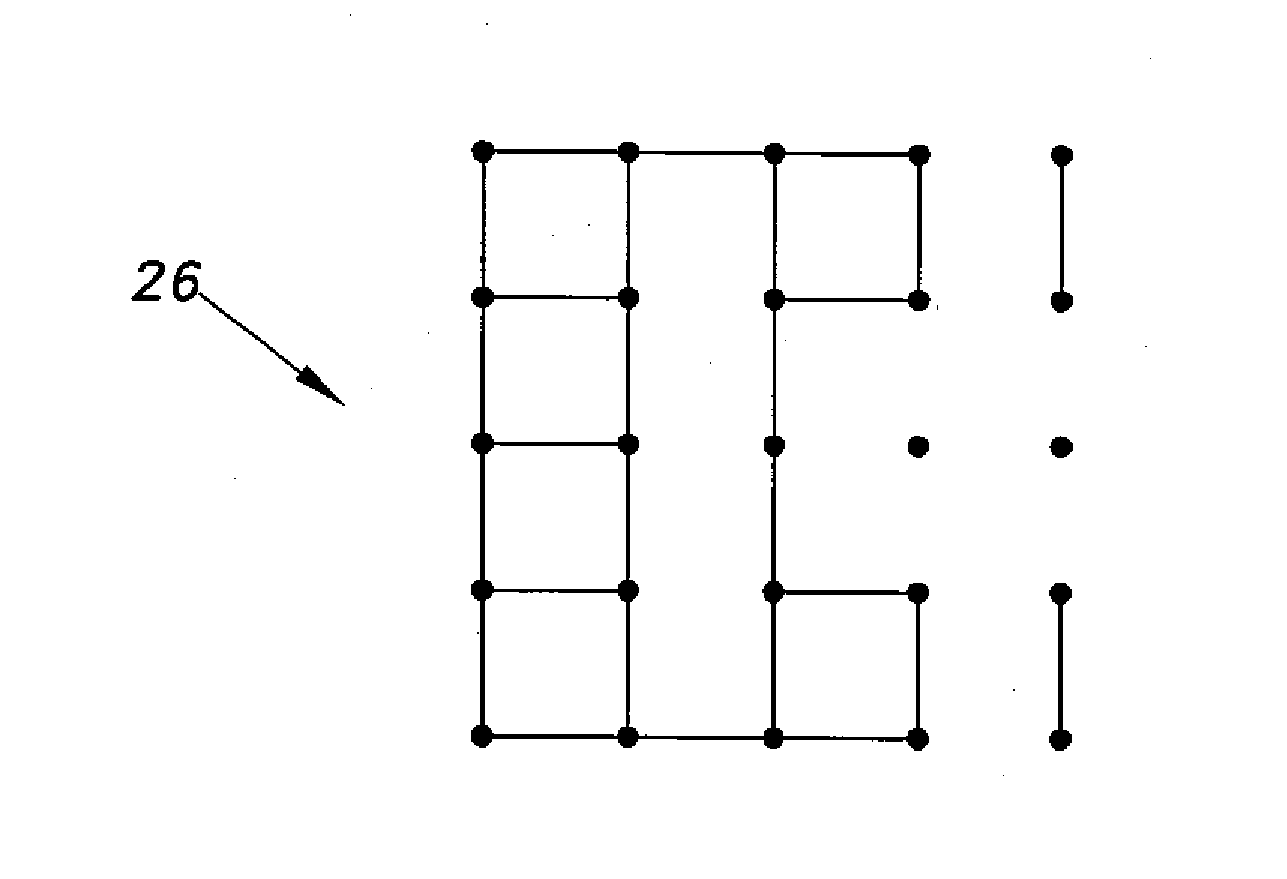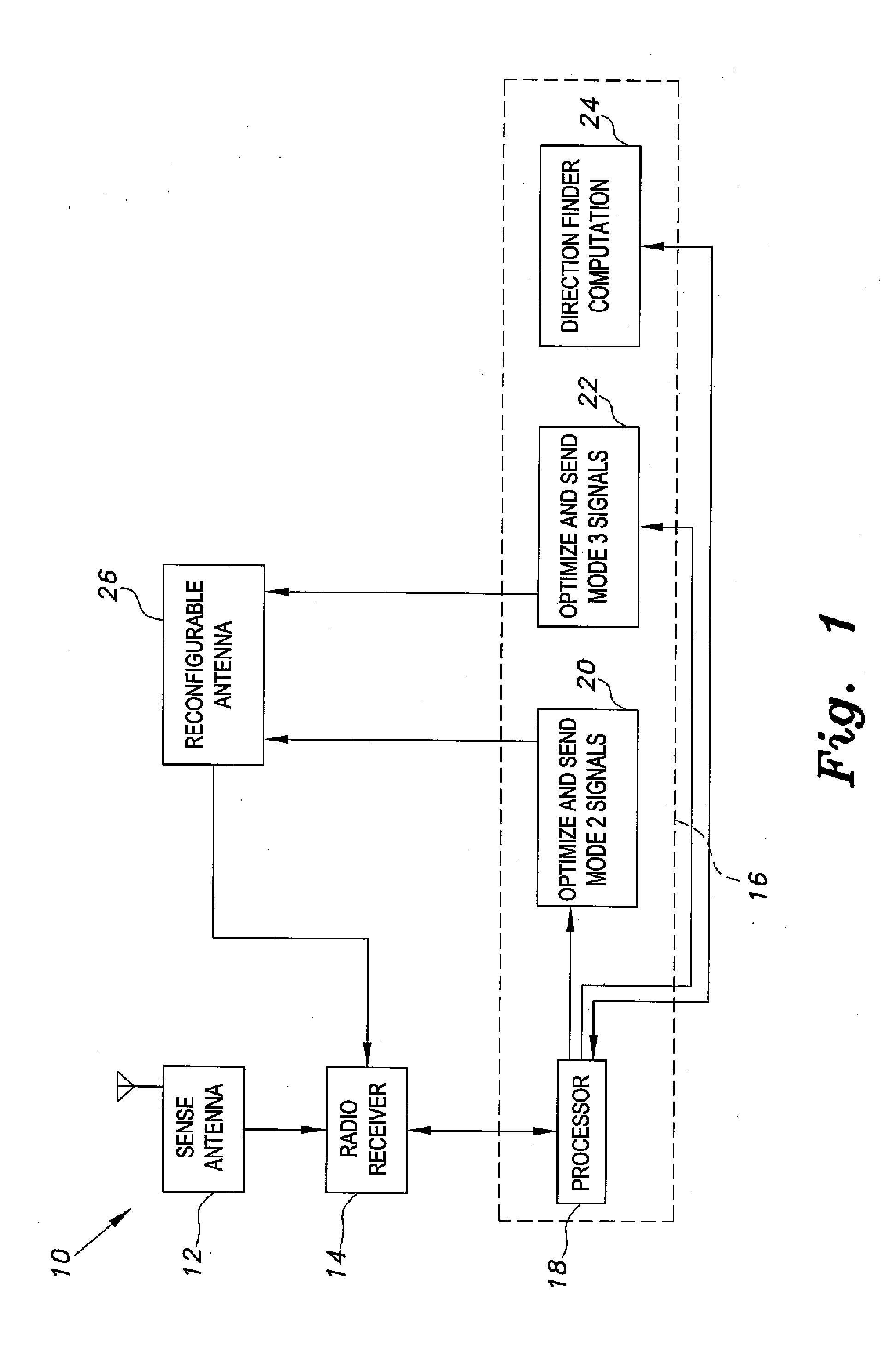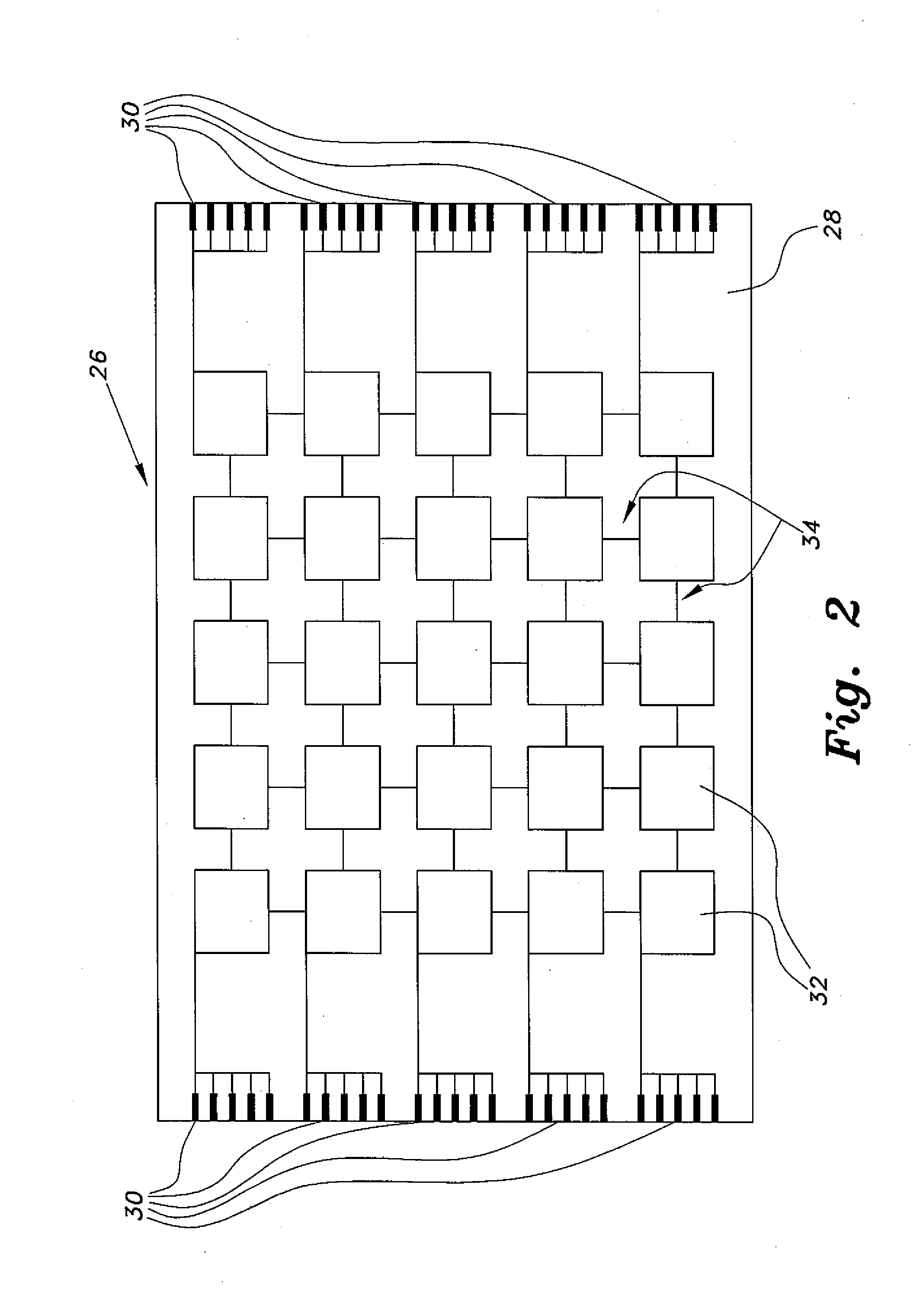Reconfigurable radio direction finder system and method
a radio direction finder and reconfigurable technology, applied in direction finders, direction finders using radio waves, instruments, etc., can solve the problems of difficult configuration of frequency, radiation pattern and polarization independent of one another, and is not convenient in general, and achieves the effect of reducing the number of radiation sources
- Summary
- Abstract
- Description
- Claims
- Application Information
AI Technical Summary
Benefits of technology
Problems solved by technology
Method used
Image
Examples
Embodiment Construction
[0025]As illustrated in the block diagram of FIG. 1, the reconfigurable radio direction finder system 10 operates in three stages or modes. In the first mode, a receiver senses a radio spectrum and detects signals and their bandwidth via a wideband antenna detection system including a sense antenna 12. Wideband antennas for sensing radio frequency signals and their bandwidths are known in the art, and it should be understood that wideband antenna detection system sense antenna 12 can utilize various suitable types of wideband antennae coupled with a suitable type of radio receiver 14, as can depend on the use or application, for example. The wideband antenna could be a separate wideband antenna or a reconfigurable antenna configured for a wide frequency range operation, for example. The detected signal of interest is initially defined in terms of its frequency range, bandwidth and polarization. This information is fed to a controller 16, which operates as a reconfiguring unit or a s...
PUM
 Login to View More
Login to View More Abstract
Description
Claims
Application Information
 Login to View More
Login to View More - R&D
- Intellectual Property
- Life Sciences
- Materials
- Tech Scout
- Unparalleled Data Quality
- Higher Quality Content
- 60% Fewer Hallucinations
Browse by: Latest US Patents, China's latest patents, Technical Efficacy Thesaurus, Application Domain, Technology Topic, Popular Technical Reports.
© 2025 PatSnap. All rights reserved.Legal|Privacy policy|Modern Slavery Act Transparency Statement|Sitemap|About US| Contact US: help@patsnap.com



